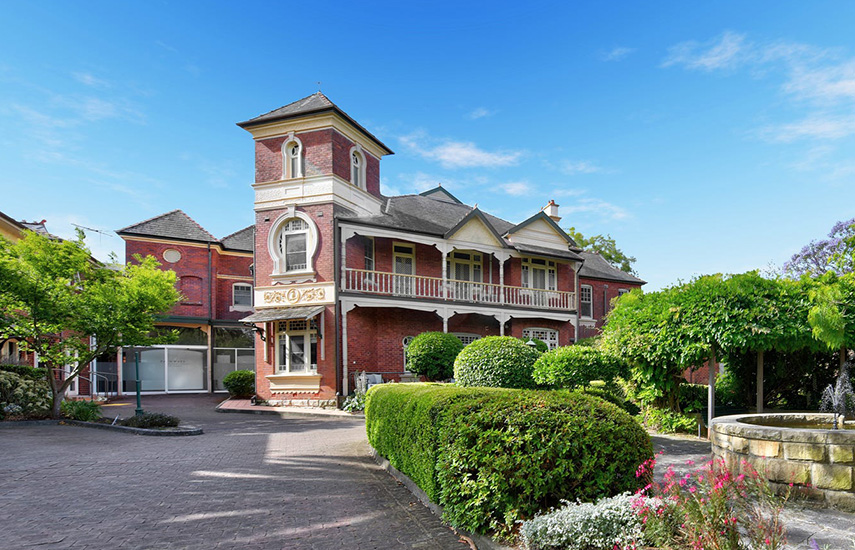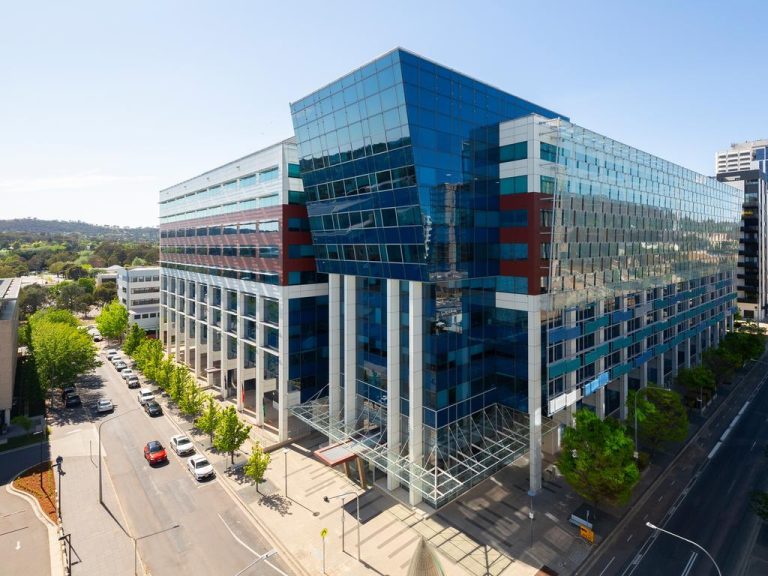Rare heritage-listed Sydney property seeks a fresh future

A heritage-listed stately home on Sydney’s North Shore that had been operating as an aged care facility is now on the market and is attracting interest from commercial and residential buyers.
Built in 1910 for Scottish tax expert William Harding who is believed to have written Australia’s initial income tax laws, Ashley House in affluent Roseville comprises a Queen Anne Federation-style residence set on almost 2,500sqm.
Mr Harding purchased the land in 1907 and when the original home was built he named the property Scarness after his home in Scotland.

Formerly known as Scarness, heritage-listed 97 Ashley Street in Roseville was built in 1910. Picture: Willoughby Municipal Library
Scarness was sold in 1923 to Mr Harding’s son, Dr Henry Alan Harding, who recreated it as a nursing home. It continued to operate as a nursing home under several different owners.
Aveo Bayview Gardens bought the property in 1985 and transformed it into an aged care facility.
The property has been described as one of the suburb’s largest landholdings. The original home is connected internally to a newer area of 17 rooms and a commercial kitchen, which were added in 1988.
While Ashley House itself is heritage listed, the newer build has a R2 low-density residential zoning which allows for a range of future possible uses.

Ashley House is set on nearly 2,500sqm in Roseville. Picture: Ray White Commercial Western Sydney.
The most recent owner, Pathways Residences, purchased the property in early 2017 and spent $1 million on renovations.
The 40-bed facility closed in October and Pathway Residences said the facility was no longer viable to run and the company is now focusing on aged care homes with 100 beds or more.
Buyers keen on stately property
Ashley House has already received more than 50 inquiries, according to Ray White Commercial Western Sydney’s managing director Peter Vines, who is selling the property in conjunction with Marshall.Chan.Yahl North Shore.
Residential homeowners, as well as commercial childcare centres, disability services and schools, have all shown interest in the rare property he said.
“The inquiries have come from the more private type of people as it’s too small for the big guys,” Mr Vines said.
“This property is really for somebody who has the right vision for it.
“It’s either a passion project or it would be perfect for somebody who has a good use in mind for it.”
Heritage-listing both a blessing and a curse
Mr Vines describes the partial heritage listing as both a blessing and a curse.
“The listing is part of what makes this property what it is, but it’s also hard to get changes approved,” he said.
“Heritage buildings are beautiful and they should be conserved but there has to be a [happy] medium where they can be rebirthed.”

The grand staircase at Ashley House is still a feature. Picture: realcommercial.com.au/for-sale
The heritage features retained include the soaring archways, decorative fireplaces, ceiling roses, French doors and leadlight windows which surround the grand staircase along with front and side verandas topped by timber fretwork.
According to The Heritage of East Chatswood, a local history booklet produced in 1988, the central staircase was one of the exceptional features of the property in its heyday, along with the timber work, kitchen and cellar. This same cellar was fitted out as an air-raid shelter in World War II.
An increased interest in heritage properties and less restrictive council regulations were ensuring a good future for these buildings, heritage property specialist Dominic Romeo from Circa Heritage and Lifestyle Property Specialists said.
“Thirty or 40 years ago, the National Trust tended to be more militant about such renovations but they’re very open-minded now because they understand that you have to live in the modern world,” he said.

Elegant fireplaces, ceiling roses and French doors have been renovated and retained. Picture: Ray White Commercial Western Sydney
Mr Romeo believes any heritage-listed restrictions are well worth any such challenges.
“Part of the fun with heritage-listed properties is doing detective work,” he said.
“These buildings might have five or eight layers of paint and wallpaper but by scraping them back, you can find the original colour scheme.
“It’s a matter of working out the original floor plan and pulling these details out.”
Ashley House is expected to sell for about $10 million. Expressions of interest close on 10 December.







